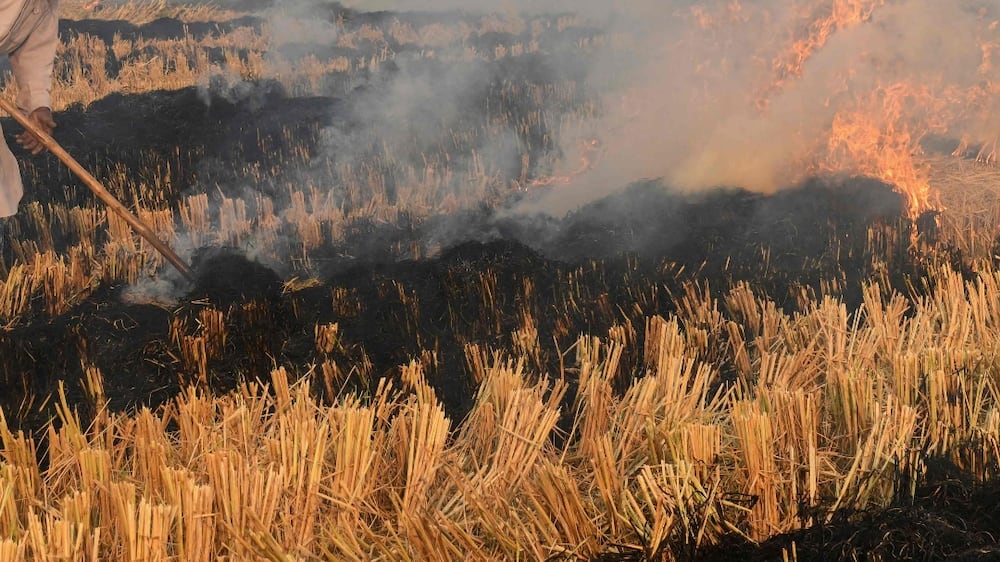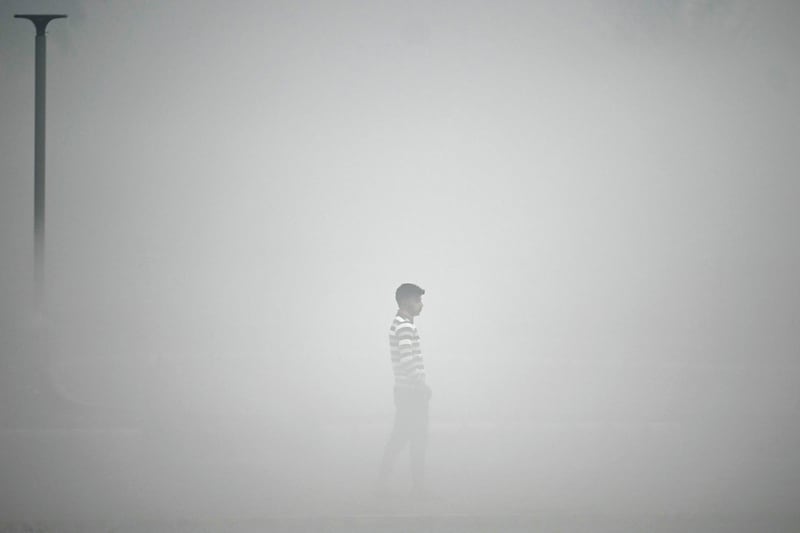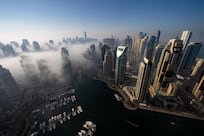India's capital of New Delhi has been engulfed in a thick blanket of smog over several days this month.
Stepping outdoors is often uncomfortable, as the pollutants are felt with every breath.
With Delhi facing the same problem year after year, not only is it harmful to citizens' health, but it is also affecting the economy, business leaders and analysts have warned.
It affects productivity and can take a toll on India's investment environment, they say.
“Air pollution in India leads to higher healthcare costs, reduced workforce productivity, impacts tourism and agriculture, compliance costs for businesses, and potential damage to its global image, affecting investments,” says Mahesh Gupta, chairman and managing director of Kent RO Systems, a water purifier company in India.
“Addressing this issue is crucial for sustainable development and economic well-being.”
India has some of the world's most polluted cities. The economic cost of air pollution to the country is $150 million a year, according to Swiss technology company IQAir.
Its main sources of pollutants are emissions from vehicles, fumes from factories, dust from construction and farmers burning stubble left from crops.
At this time of the year, pollution is at its worse in Delhi because cold air traps the pollutants. Pollution levels typically rise during November's Diwali holiday period, when many celebrate the festival of lights with firecrackers despite a nationwide ban.
This month, air quality reached levels categorised as “hazardous” by IQAir, forcing schools in the capital to close.
But it is not only Delhi that has been experiencing high pollution. Mumbai, which, as a coastal city, normally has cleaner air, has also been experiencing poorer air quality recently.
This has been exacerbated by a number of large-scale construction projects in India's financial capital.
“The ramifications [of air pollution] are particularly acute for companies operating in a nation where a substantial proportion of employment opportunities hinge on outdoor activities,” says Monica Sood, chairwoman of the National Unity and Security Council.
“Even sectors predominantly conducted indoors, such as call centres, do not escape unscathed from the deleterious effects of air pollution. Observably, the diminished air quality adversely impacts the efficiency of workers within these enclosed environments.”
Air pollution is a threat to “the fiscal well-being of the nation”, Ms Sood adds.
Hari Shankar Shyam, professor of management at Sharda University in Greater Noida, agrees.
“Air pollution in India, particularly in cities like Delhi and Mumbai, has far-reaching consequences on businesses and the overall economy,” he says.
“The impact on health drives up healthcare expenses for both individuals and organisations. This may result in higher rates of absenteeism, lower levels of productivity and a general deterioration in the calibre of the labour force.”
A growing number of investors base their judgments on environmental considerations and the apparent pollution issue may cause them to question the long-term viability and resilience of companies operating in impacted areas, Mr Shyam adds.
Both leisure and business travel can also be negatively affected.
“High pollution levels can cause a drop in international conferences, exhibits and other events, which would affect the money these events bring in,” he says.
India is currently hosting the ICC Men's Cricket World Cup, during which some players have complained about the air quality and teams have even been forced to cancel training sessions in New Delhi on the advice of doctors.
This comes as Prime Minister Narendra Modi said in October that India will bid to host the 2036 Olympic Games.
Authorities in India are taking a number of measures to try to improve air quality in polluted cities.
In New Delhi, authorities have restricted construction activities and used water cannons to try to improve the air quality. Similar measures are being taken in Mumbai, with sprinklers and “smog guns” being used to try to clean the air. But these efforts have had a limited effect.
This month, the Supreme Court of India ordered state governments in areas surrounding Delhi to stop crop-burning immediately and to find alternatives to the practice.
“Several Indian businesses are concentrating on solving the problem of stubble-burning and its aftermath,” says Ankur Mittal, partner at Physis Capital, a venture capital fund.
“These entrepreneurs are creating technology that can use stubble for economic positive activities like producing biofuels, rewarding farmers in the process. Nonetheless, in order to promote the expansion of these companies, the government must offer its assistance.”
'The National' visits India's burning farms blamed for Delhi's toxic air pollution

In other steps to clean the air, Delhi is considering plans to induce rain later this month, its environment minister Gopal Rai said last week.
Starting this week, the local government will also restrict the number of vehicles on the road by imposing an “odd-even” rule, which allows motorists to travel only on alternate days, depending on the registration number of their cars.
“Despite the [local] government trying to take certain measures, they are so ineffective,” says Vibhuti Garg, director of South Asia for the Institute for Energy Economics and Financial Analysis.
“I would say they sprang into action only when we hit the situation and then they'll forget about it the whole of next year,” Ms Garg says.
The air pollution, “specifically in terms of investment definitely gives a very negative image for India”, she adds.
Meanwhile, pollution control measures can also have a negative impact on some companies and workers.
“The banning of construction activities ends income of construction workers who are mostly daily wagers,” says Sandeep Chachra, executive director at ActionAid Association.
“India must invest in green infrastructure and invest in the infrastructure needed to monitor and prevent pollution.”
There is not only a need for a robust regulatory framework, but also enforcement measures to bring down pollution, according to Ms Sood.
“Stringent emission standards for industries, vehicular traffic and construction activities must be enforced with unwavering diligence.”
Longer-term solutions are being worked on, including India's push to transition to renewable energy and efforts to encourage a switch to electric vehicles.
But in the near and medium terms, companies are likely to continue to struggle with the challenges that come with high levels of air pollution, analysts say.
“As pollution becomes an India-wide problem, the availability of skilled talent might become an issue, potentially affecting the investment climate,” says Mr Mittal.
Areas such as Delhi may experience a decline in their overall appeal to prospective investors, says Ratish Pandey, founder and business coach at Ethqiue Advisory.
“It can [also] prompt residents to consider relocating, impacting the real estate market in the long term,” Mr Pandey says.
“The cumulative effects of poor air quality on health, talent attraction and city image can have a long-term economic impact. Cities may need comprehensive strategies to address environmental concerns and sustain economic growth.”






